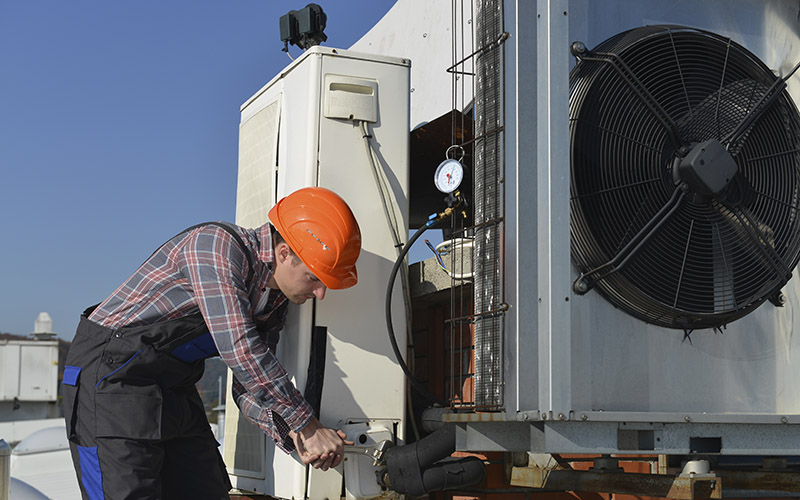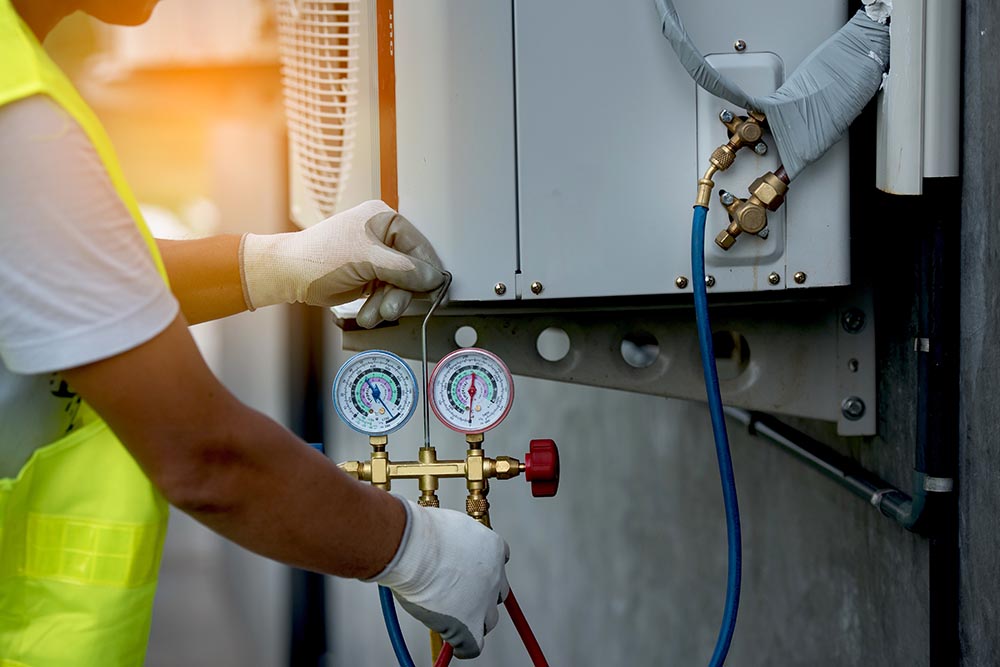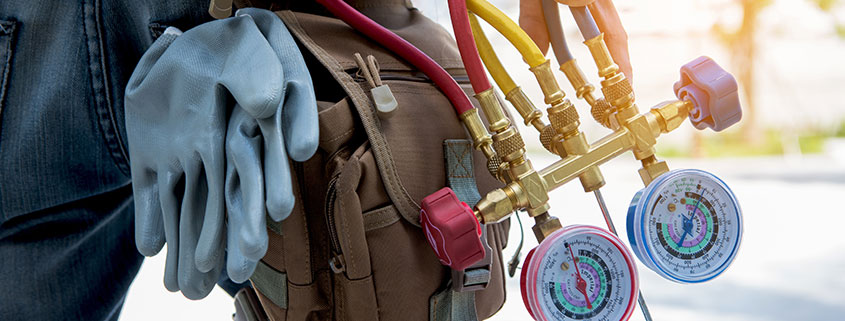Major Advantages of Annual heat pump service
Major Advantages of Annual heat pump service
Blog Article
Exactly How a Warmth Pump and Heating System Job With Each Other to Optimize Your Home's Home heating Efficiency
Understanding how a heat pump and furnace collaborate is essential for property owners seeking effective home heating remedies. Each system has its toughness, providing a balanced strategy to home comfort. The heatpump masters moderate temperatures, while the furnace delivers quick heat throughout extreme cold. This synergy not just minimizes power expenses but also boosts the lifespan of both appliances. What factors affect this partnership, and exactly how can house owners maximize their advantages?
Comprehending Heat Pumps: Just How They Work
Although many individuals might be not familiar with their inner workings, heat pumps play a vital function in modern-day heater. These tools operate by moving heat from one location to an additional, utilizing the concepts of thermodynamics. In cooler months, a warmth pump extracts warm from the outside air, ground, or water, and transfers it indoors to warm the space. On the other hand, during warmer months, it can reverse the process, acting as an ac unit by expelling heat from inside to the outside.Heat pumps contain an evaporator, development, compressor, and condenser valve. The cooling agent within the system absorbs warmth as it vaporizes at low temperature levels and pressures. The compressor then enhances the stress and temperature level of the refrigerant, enabling it to release warmth as it condenses. This reliable process can substantially reduce energy consumption compared to typical heating techniques, making heatpump a lasting choice for environment control in homes.
The Duty of Furnaces in Home Home Heating
Heating systems play a necessary duty in home heating by providing a trusted resource of heat throughout the chillier months. They operate by producing warm with combustion or electric resistance, distributing it throughout the home via air ducts or radiant systems. The performance of a heater is often measured by its Annual Gas Application Performance (AFUE) ranking, which shows just how successfully the system converts fuel into heat.Furnaces can use different energy resources, including gas, electrical power, oil, or lp, permitting homeowners to pick one of the most suitable alternative for their requirements. Unlike heatpump, which might have a hard time in severe cool, furnaces maintain regular efficiency, ensuring that interior temperature levels stay comfortable no matter outdoor problems. Additionally, contemporary heating systems typically come furnished with innovative innovation, such as variable-speed blowers and clever thermostats, enhancing their efficiency and responsiveness. This adaptability makes furnaces a critical element in comprehensive home heating techniques.

Advantages of Utilizing Both Systems With Each Other
Combining the staminas of both furnaces and heatpump can lead to a much more efficient and efficient home heating option. Utilizing both systems enables home owners to take advantage of the heatpump's energy effectiveness throughout milder temperatures while relying upon the heater for more severe cold conditions. This twin technique can significantly minimize power costs, as warm pumps eat less electrical power than standard home heating methods when temperatures are moderate.Additionally, utilizing both systems with each other can enhance convenience levels in the home. Heat pumps can offer constant, also home heating, while heaters can quickly raise ambient temperatures when needed. The assimilation of both systems can expand the life-span of tools by lowering wear and tear on each device, as they share the work. Eventually, home owners can appreciate a well balanced, cost-efficient home heating remedy that readjusts flawlessly to differing climate condition, guaranteeing a warm and inviting home throughout the wintertime months.
Just How Warm Pumps and Furnaces Complement Each Other
When property owners integrate heat pumps and heaters, they develop a complementary furnace that makes best use of performance and convenience. Heatpump operate by transferring warmth from the outdoors air or ground, making them highly effective in moderate environments. They excel throughout milder temperatures, supplying economical heating. Conversely, heaters generate warmth through burning or electric resistance, providing solid, immediate heat during extreme cold conditions.The mix of these two systems permits for vibrant adjustments based on temperature fluctuations. During warmer months or milder winter season days, the heat pump can take the lead, preserving energy and lowering costs. As temperature levels drop, the heating system can perfectly engage, making sure consistent warmth throughout the home. This harmony not just maximizes energy use but additionally enhances the lifespan of both systems, as each system runs within its ideal performance variety. With each other, they develop a balanced setting that adjusts to differing climate demands.
Enhancing Performance: Tips for Homeowners
Homeowners can enhance their heating effectiveness via numerous sensible strategies. Establishing a regular maintenance routine, integrating wise thermostat innovation, and applying reliable insulation and securing solutions are key steps. These measures not only improve comfort however additionally lower power expenses.
Routine Upkeep Arrange
To ensure maximum home heating performance, developing a routine maintenance schedule is necessary for any home. Homeowners ought to prioritize regular examinations of both heatpump and heaters to establish peak efficiency. This includes changing air filters each to three months, as read the full info here clogged filters can greatly lower performance. Furthermore, scheduling expert maintenance at the very least annually enables service technicians to recognize and resolve possible issues prior to they intensify. Homeowners need to likewise cleanse the heatpump's outdoor system to stop particles buildup that can prevent air flow. By sticking to a routine upkeep schedule, home owners not only boost their heating unit' performance but also expand their life-span, causing greater comfort and lowered energy expenses throughout the cooler months.
Smart Thermostat Integration
Incorporating a clever thermostat right into a home heating system can greatly enhance energy efficiency, especially as it allows for precise control over temperature setups. These tools can learn the homeowner's schedule and preferences, instantly adjusting the temperature level to maximize comfort while reducing power usage. They can reduce heating throughout times when the home is vacant, minimizing unnecessary intake. Lots of wise thermostats also provide real-time power usage information, allowing house owners to make informed choices regarding their home heating routines. Additionally, remote accessibility by means of smartphone applications allows customers to readjust settings from anywhere, ensuring the home is cozy upon return. In general, clever thermostat assimilation not only improves convenience yet significantly adds to power cost savings and performance.
Insulation and Sealing Solutions
Smart thermostats play a critical function in energy performance, however their performance can be considerably boosted by appropriate insulation and securing options. Homeowners must focus on protecting attic rooms, floors, and wall surfaces to lessen heat loss. High-quality insulation materials, such as spray foam or fiberglass, can greatly enhance thermal resistance. In addition, sealing voids around windows, air ducts, and doors prevents cold air infiltration and heat escape. Weatherstripping and caulking are reliable approaches for dealing with these leakages - heat pump service. Normal inspections for air leaks, along with using blower door tests, can assist determine issue areas. By spending in insulation and securing, home owners can optimize the efficiency of their heater, eventually bring about decreased power usage and reduced energy costs
Typical Myths Regarding Heat Pumps and Furnaces
What mistaken beliefs surround heatpump and heating systems? Lots of people wrongly believe that heatpump are inadequate in cooler climates. Actually, modern-day warmth pumps are created to operate successfully also in low temperature levels, supplying trusted home heating throughout wintertime. Another usual misconception is that furnaces are constantly a lot more efficient than heatpump. Nevertheless, this depends upon the particular power resources and performance rankings of the systems concerned. Some may additionally believe that using both systems at the same time is unneeded, but actually, this mix can enhance home heating effectiveness, especially throughout extreme climate conditions. Furthermore, individuals usually assume that warm pumps need consistent maintenance, when actually, they have comparable maintenance needs to typical heater. By unmasking these misconceptions, property owners can make even more enlightened choices regarding their heating choices, inevitably leading to enhanced convenience and power efficiency in their homes.
Maintenance Considerations for Combined Solutions

Regularly Asked Concerns
Can Warm Pumps Job Successfully in Very Cold Climates?
Warm pumps can struggle in extremely cool environments because of reduced efficiency and basics warmth removal restrictions. However, advancements in modern technology have led to versions created for better efficiency in such conditions, boosting their feasibility in severe settings.
For How Long Do Warm Pumps and Furnaces Commonly Last?
Heat pumps typically last 15 to twenty years, while furnaces have a life expectancy of 15 to 30 years. Normal maintenance can expand their longevity, making sure reliable operation and lowering the requirement for early substitutes.

What Is the Ordinary Cost of Putting Up Both Solutions?
The average price of installing both a heatpump and a furnace commonly ranges in between $5,000 to $10,000 - heat pump replacement ooltewah tn. Elements affecting this cost consist of system size, setup intricacy, and regional labor rates
Exist Tax Rewards for Making Use Of Energy-Efficient Heating Equipments?
Many home owners ask about tax rewards for energy-efficient heating unit. Various federal and state programs often use credit reports or rebates, motivating the fostering of sustainable technologies to lower power consumption and promote environmental duty.
Just how Do I Choose the Right Size Heatpump and Heating System?
Picking the right size warm pump and heating system entails determining the home's square video, thinking about insulation top quality, and assessing local environment. Consulting an expert can assure ideal system efficiency and energy efficiency based on details requirements. furnace replacement. Understanding just how a warmth pump and here heater job together is necessary for home owners seeking effective heating remedies. In cooler months, a heat pump extracts warm from the outside air, ground, or water, and transfers it inside to heat the living space. When property owners incorporate warmth pumps and heaters, they create a corresponding home heating system that makes best use of effectiveness and comfort. Warm pumps operate by moving warm from the outside air or ground, making them highly efficient in modest climates. Warmth pumps can battle in exceptionally chilly climates due to decreased efficiency and warm extraction limitations
Report this page